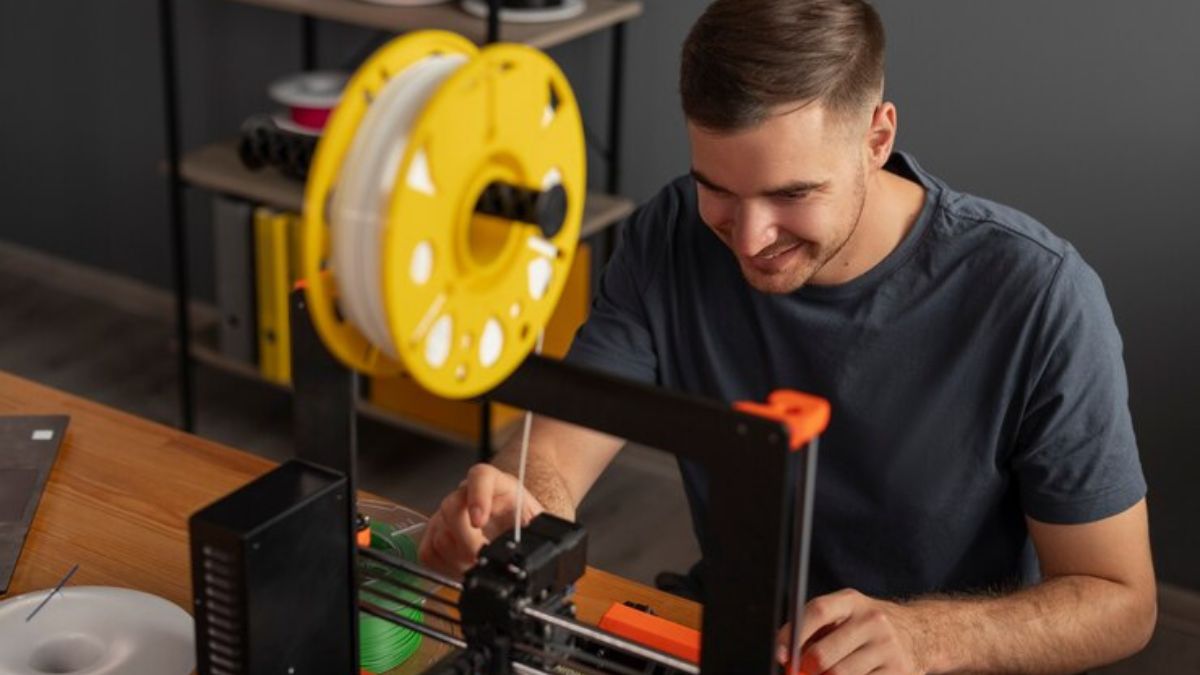TECHNOLOGY
The Art and Science of Pedacustic: A Deep Dive into Its Techniques

Imagine a world where sound transforms emotions, and music becomes an immersive experience that reaches deep into your soul. This is the realm of Pedacustic—a captivating fusion of art and science that invites listeners on a journey through layers of auditory exploration. Whether you’re an aspiring composer or simply someone who appreciates innovative sounds, understanding Pedacustic can unlock new dimensions in your musical experiences. From its intriguing origins to the intricate techniques involved, there’s so much to discover about this unique form of sound artistry. Let’s dive into the fascinating world of Pedacustic together!
The Origins of Pedacustic
The origins of Pedacustic are as intriguing as the sounds it produces. It emerged from a blend of traditional music practices and modern sound engineering techniques. As artists began to explore how different layers of sound interact, they stumbled upon this innovative approach.
In its early days, Pedacustic was heavily influenced by acoustic experiments in the late 20th century. Pioneering musicians sought to push boundaries beyond conventional melodies and rhythms. They realized that layering diverse sounds could create an emotional landscape far more complex than single-note compositions.
Regions across the globe contributed unique elements to this evolving art form. From tribal drum patterns in Africa to minimalist movements in Europe, each influence added depth and texture. This rich tapestry laid the groundwork for what we now recognize as Pedacustic—a celebration of sound that transcends cultural barriers and resonates with listeners on multiple levels.
You may like also:Collaborative Success: How Stichting Bouwresearch Partners with Industry Leaders for Progress
The Art of Layering Sounds
Layering sounds is a fundamental technique in Pedacustic that transforms simple melodies into rich auditory experiences. By combining different audio elements, you create depth and texture.
Imagine starting with a soft piano melody. Then, add strings for warmth and resonance. Each layer introduces new emotions, enhancing the listener’s connection to the piece.
Rhythm plays an essential role as well. Percussion can provide drive while harmonies weave intricate patterns throughout your composition. The interplay between these layers builds complexity without overwhelming the senses.
Experimentation is key here; try varying volume levels and panning to achieve balance among layers. This approach allows certain sounds to shine through while others support them quietly from behind.
Crafting a layered soundscape invites creativity and personal expression, making every composition uniquely yours within the realm of Pedacustic art.
Understanding the Science Behind Pedacustic
Pedacustic intertwines art and science in fascinating ways. At its core, it examines how sound waves interact with different mediums. This interaction creates unique auditory experiences that can evoke specific emotions.
The frequency of a sound wave determines its pitch, while amplitude impacts volume. Understanding these properties is essential for crafting immersive compositions. It’s not just about the notes played; it’s about how they resonate within the space.
Acoustic principles play a crucial role here. Reflection, absorption, and diffusion shape the way we perceive sounds. By manipulating these elements, artists can create layered textures that engage listeners on multiple levels.
Moreover, technology has revolutionized Pedacustic practices. Digital tools allow deeper control over sound manipulation—opening new avenues for creativity and exploration in this field.
Benefits and Uses of Pedacustic
Pedacustic offers a diverse range of benefits that appeal to musicians and sound designers alike. One significant advantage is its ability to evoke emotions through carefully crafted soundscapes. By manipulating various auditory elements, artists can transport listeners into different moods or environments.
Another key benefit lies in the technique’s versatility. Pedacustic can be used across multiple genres—from ambient music to film scores—making it an invaluable tool for creators seeking innovation.
Additionally, it enhances storytelling in audio formats. By layering sounds meaningfully, narrators and composers can create immersive experiences that captivate audiences.
Pedacustic also promotes mindfulness among listeners. Engaging with these intricate sound layers encourages deeper listening and appreciation for subtle nuances in music.
Moreover, this approach can aid mental well-being by offering therapeutic effects; soothing compositions often help alleviate stress and anxiety while fostering relaxation.
Techniques to Create Your Own Pedacustic Composition
Creating your own Pedacustic composition can be an exhilarating journey. Start by experimenting with various sound layers. Choose contrasting elements to evoke emotion and intrigue.
Consider using natural sounds, like rustling leaves or flowing water. These organic textures add depth to your piece and connect listeners to the environment.
Next, focus on rhythm. Varying beat patterns can create tension or tranquility depending on your intent. Play around with tempo changes for added dynamism.
Don’t underestimate silence; it’s just as powerful as sound itself. Strategic pauses allow listeners a moment of reflection amid the auditory experience.
Utilize technology wisely—digital audio workstations (DAWs) offer endless possibilities for manipulation and layering sounds seamlessly.
Trust your instincts throughout this creative process, allowing spontaneity to guide you along the way!
Examples of Famous Pedacustic Pieces
Pedacustic has inspired many remarkable compositions that showcase its unique blend of sound layering and sonic exploration. One standout piece is “Murmurations” by composer Anna Clyne. This work captures the fluidity of bird movements, intertwining various audio textures to create a serene yet dynamic listening experience.
Another notable example is “Requiem for a Dream” by Clint Mansell. The haunting score uses pedacustic principles to evoke strong emotions, layering orchestral elements with electronic sounds that resonate deeply with audiences.
Additionally, Brian Eno’s “Music for Airports” redefines ambient music through subtle variations in tone and rhythm. Each layer contributes to an immersive atmosphere, allowing listeners to feel enveloped in sound.
These pieces exemplify how pedacustic techniques can transcend traditional composition methods, inviting creativity while engaging the senses in extraordinary ways.
Conclusion:
Pedacustic is a fascinating blend of creativity and technical skill. Its ability to merge various sound layers creates an immersive experience unlike any other.
As artists explore this genre, they push boundaries and redefine what music can be. Each composition tells a unique story through the artful use of sounds.
Whether you are a seasoned musician or just starting, there’s something captivating about crafting your own Pedacustic pieces. The possibilities are endless.
Dive into this world, experiment with techniques, and let your imagination guide you. Your journey in Pedacustic could lead to unexpected discoveries and profound connections with listeners.
The beauty lies not only in the final product but also in the process itself—an exploration worth undertaking for anyone passionate about sound artistry.
FAQ’s:
What is Pedacustic?
Pedacustic refers to the innovative technique of layering sounds in a way that creates rich auditory experiences. It merges artistic expression with scientific principles related to acoustics.
How did Pedacustic originate?
The origins trace back to various musical traditions where sound manipulation was key. Artists began experimenting with layering as technology advanced, leading to what we now recognize as Pedacustic.
Can anyone create their own Pedacustic compositions?
Absolutely! With some basic knowledge and practice in sound layering techniques, anyone can start creating their own unique pieces using this method.
What tools do I need for Pedacustic composition?
While you can use traditional instruments, digital audio workstations (DAWs) are popular choices. Software like Ableton Live or Logic Pro offers extensive features for manipulating layered sounds effectively.
Are there any famous pieces created using Pedacustic techniques?
Yes! Several contemporary artists have incorporated these methods into their music. Pieces by Björk and Radiohead exemplify the depth that comes from skilled sound layering.
Is learning about Pedacustic worth it for musicians?
Definitely! Mastering this technique not only enhances your ability to create but also broadens your understanding of how different sounds interact within a composition.
TECHNOLOGY
Lwedninja for Beginners: A Step-by-Step Guide to Getting Started

Welcome to the exhilarating world of Lwedninja! If you’ve ever been intrigued by martial arts and their blend of discipline, strategy, and physical prowess, then you’re in for a treat. Lwedninja is not just about kicks and punches; it’s a comprehensive system that nurtures both body and mind. Whether you’re looking to improve your fitness, learn self-defense techniques, or simply explore something new, Lwedninja offers an exciting journey worth embarking on.
This guide will illuminate the path for beginners eager to dive into this captivating practice. Get ready to unlock your potential as we break down everything you need to know from its origins to practical tips on getting started. Let’s jump right in!
What is Lwedninja?
Lwedninja is a dynamic martial art that combines traditional techniques with modern training methods. It emphasizes agility, strategy, and adaptability. Practitioners learn to harness their physical strength while developing mental resilience.
At its core, Lwedninja focuses on practical self-defense skills. Yet it also invites practitioners to explore personal growth through discipline and focus. The practice encourages a deep understanding of movement, balance, and timing.
This unique blend sets Lwedninja apart from other martial arts styles. Participants not only engage in rigorous physical activity but also cultivate mindfulness and concentration. As you delve deeper into this art form, you’ll discover the beauty of combining mind and body for holistic development.
Whether you’re aiming to increase your fitness level or seeking new challenges, Lwedninja offers an enriching experience for everyone involved.
History and Origin of Lwedninja
Lwedninja traces its roots back to ancient warrior practices. Emerging from a blend of traditional martial arts and spiritual disciplines, it reflects the philosophy of balance and harmony.
The term “Lwedninja” combines elements that signify agility and wisdom. This unique approach was developed by early practitioners who sought not only physical mastery but also mental clarity.
As cultures evolved, so did Lwedninja. It absorbed influences from neighboring regions, adapting techniques while maintaining its core principles.
Throughout history, stories of legendary masters have enriched its narrative. Their teachings emphasized adaptability and resilience—qualities essential for overcoming life’s challenges.
Today, Lwedninja continues to thrive globally. Its rich heritage inspires new generations to explore both its physicality and philosophical depth.
Benefits of Practicing Lwedninja
Practicing Lwedninja offers a diverse range of benefits that extend beyond physical fitness. It enhances flexibility and strength, improving overall body coordination. As you progress, your endurance also increases significantly.
Mental clarity is another vital advantage. Engaging in Lwedninja requires focus and discipline, fostering a sharper mind and better decision-making skills. This practice helps reduce stress levels as well, promoting emotional stability and resilience.
Social connections flourish through group training sessions or classes. Meeting fellow practitioners creates friendships built on shared goals and experiences.
Additionally, learning Lwedninja cultivates self-confidence. Mastering techniques boosts your sense of achievement, empowering you to tackle challenges both inside and outside the training space.
This unique blend of physical prowess, mental acuity, social interaction, and personal growth makes practicing Lwedninja an enriching experience for anyone willing to embark on this journey.
Getting Started: Finding a Teacher or Mentor
Finding the right teacher or mentor is crucial when starting your journey with Lwedninja. A knowledgeable guide can make all the difference in acquiring skills effectively.
Start by looking for local martial arts schools that specialize in Lwedninja. Many schools offer beginner classes where you can meet instructors and fellow students. This community can give you valuable insights into the practice.
Don’t hesitate to explore online platforms as well. Virtual lessons have become popular, allowing access to experienced teachers from around the world. Check reviews and testimonials before committing.
Once you find potential mentors, observe their teaching style. A good instructor should be patient, encouraging, and able to adapt techniques based on individual needs.
Connecting with a mentor who resonates with your learning style will enhance your experience significantly. Remember, this relationship is about growth and discovery together.
Basic Techniques and Forms
Lwedninja offers a variety of basic techniques and forms that lay the foundation for your practice. Each movement combines precision, fluidity, and power.
Start with stances like the horse stance or front stance. These positions build stability and allow you to channel energy effectively.
Next, focus on strikes such as punches and kicks. Mastering these fundamental strikes is crucial for developing accuracy and strength.
Forms are sequences of movements that simulate combat scenarios. They teach rhythm, balance, and coordination while enhancing muscle memory.
Practice regularly to internalize each technique. Consistency leads to improvement in skill level over time.
As you grow more comfortable with the basics, you’ll find it easier to explore advanced maneuvers later on. Embrace this journey; every expert was once a beginner refining their craft step by step.
Advanced Techniques and Applications
Advanced Lwedninja techniques push boundaries and enhance skill. Practitioners explore complex forms that integrate agility, precision, and timing.
One notable application is the use of breath control. Mastering breathing patterns not only boosts physical performance but also sharpens mental focus. This synergy between mind and body creates a powerful advantage during practice or competitions.
Another exciting aspect involves situational awareness training. Advanced students learn to read their environment, anticipate movements, and react instinctively to various scenarios. This heightened perception can translate into everyday life, improving decision-making skills in challenging situations.
Additionally, sparring sessions with varied opponents introduce unpredictability. These encounters refine adaptability and strategy while fostering resilience under pressure. The combination of these advanced techniques cultivates a deeper understanding of Lwedninja as both an art form and a practical discipline for self-defense.
Incorporating Lwedninja into Daily Life
Integrating Lwedninja into your daily routine can transform not just your physical health but also your mental well-being. Start small by dedicating a few minutes each morning to practice basic forms or techniques. This sets a positive tone for the day.
Consider incorporating mindfulness practices from Lwedninja while commuting. Focus on your breath and visualize strength and balance, which helps reduce stress during hectic moments.
Additionally, find opportunities throughout the day to engage in quick stretches or movements inspired by Lwedninja principles. Whether at work or home, these micro-practices keep you energized and centered.
Join community classes or workshops that emphasize applying Lwedninja philosophies in everyday situations. Engaging with like-minded individuals fosters motivation and support.
Embrace challenges as part of the journey. Each setback offers valuable lessons that refine both skill and character over time.
Misconceptions About Lwedninja
Many people have a skewed perception of Lwedninja. One common misconception is that it’s solely about combat. While self-defense techniques are integral, Lwedninja also emphasizes discipline, mental focus, and personal growth.
Another myth is that only young individuals can practice it effectively. In reality, practitioners of all ages find value in its teachings. Flexibility and strength improve over time with dedication.
Some believe Lwedninja requires years of training before seeing any benefits. However, even beginners experience positive changes early on—both physically and mentally.
Additionally, many think Lwedninja is too rigid or formalized. On the contrary, it’s adaptable to individual needs and lifestyles. The community encourages experimentation within established frameworks.
There’s an idea that you need expensive gear or uniforms to start practicing. This couldn’t be further from the truth; enthusiasm and commitment are far more important than fancy equipment.
Conclusion
Lwedninja offers a compelling journey for those willing to explore its depths. This practice intertwines physical and mental disciplines, fostering growth in both areas.
Embracing Lwedninja means engaging with a community of like-minded individuals. The shared experiences can enhance your learning curve dramatically.
As you progress, the benefits become increasingly apparent. Improved focus, strength, and agility are just the tip of the iceberg.
The rich history adds another layer to this fascinating discipline. Understanding where it comes from can deepen your appreciation and commitment.
Venturing into Lwedninja is not merely about mastering techniques; it’s about personal transformation too. Each step taken opens new doors within yourself.
This pursuit invites curiosity and encourages exploration beyond traditional boundaries of practices. As you embark on this path, keep an open mind and heart ready for what lies ahead.
FAQ’s
What is Lwedninja?
Lwedninja refers to a modern martial art form that emphasizes agility, flexibility, and strategic thinking. It’s not just about combat; it’s also about personal growth and self-discipline.
Is Lwedninja suitable for all ages?
Yes! People of all ages can participate in Lwedninja. The training can be adjusted according to individual fitness levels and capabilities.
Do I need prior experience to start practicing Lwedninja?
No previous experience is necessary. Beginners are welcome, as instructors will provide guidance tailored to various skill levels.
How often should I train in Lwedninja?
Consistency is key. Aim for at least two or three sessions per week to see noticeable progress over time.
Can I learn Lwedninja online?
While there are online resources available, finding a local teacher or mentor will provide invaluable hands-on experience essential for mastering techniques effectively.
What equipment do I need for practicing Lwedninja?
Basic gear includes comfortable clothing suited for movement—such as athletic wear—and sometimes protective gear depending on the intensity of training involved.
Does practicing Lwedninja improve fitness?
Absolutely! Practicing regularly enhances strength, endurance, flexibility, coordination, and balance—all integral components of overall health.
With these insights in hand, exploring the realm of Lwdwnja becomes an exciting prospect full of possibilities! Embrace this journey with an open heart and enjoy every step along the way.
TECHNOLOGY
Wepbound Uncovered: How This Tool Transforms Your Online Experience

Navigating the vast expanse of the internet can sometimes feel overwhelming. With countless websites and endless information at our fingertips, it’s easy to get lost in the digital wilderness. This is where Wepbound steps in, offering a transformative solution designed to enhance your online experience. Whether you’re an avid researcher or just someone looking for a smoother browsing journey, this tool has something special in store for you. Let’s explore how Wepbound reshapes your interaction with the web, making every click count and every search meaningful.
The Features and Benefits of Webbound
Webbound stands out with its intuitive interface, making navigation a breeze. Users can easily customize their browsing experience to fit personal preferences.
One of the standout features is its robust privacy settings. Webbound prioritizes user security, offering tools that block trackers and ads effectively. This not only enhances safety but also speeds up page loading times.
The tool’s smart search capabilities are another benefit. It learns from your behavior and delivers more relevant results over time. This means less scrolling and more efficiency in finding what you need.
Collaboration tools within Webbound also shine for teams working remotely. Sharing links or documents is seamless, fostering better communication among colleagues without leaving the platform.
With regular updates, users can expect new features that enhance functionality continually. Embracing Webbound means stepping into a future where online experiences are tailored just for you.
How Webbound Improves Your Online Browsing
Webbound enhances online browsing by streamlining your experience. It intelligently filters out distractions, allowing you to focus on what truly matters.
With its smart algorithm, Webbound learns your preferences and curates content tailored just for you. This personalized approach saves time and reduces information overload.
Navigation becomes a breeze with intuitive features that guide users effortlessly through websites. No more endless scrolling or searching; everything is at your fingertips.
Performance optimization ensures faster loading times too. This makes for smoother interactions, whether you’re streaming videos or diving into articles.
Additionally, enhanced privacy settings protect user data without compromising convenience. You can explore the web confidently, knowing that your personal information remains secure.
Such improvements not only make browsing enjoyable but also significantly boost productivity. The seamless integration of these elements transforms how we interact with the digital world around us.
Real-Life Examples of Webbound in Action
Webbound has significantly changed how users navigate the web. Take Sarah, a busy marketing professional. She relies on Webbound to manage her numerous tabs efficiently. Instead of losing track of important research, she organizes her work into customizable categories, saving time and reducing stress.
Then there’s Tom, an online educator who uses Webbound during his virtual classes. He shares links seamlessly with students while keeping resources easily accessible. The tool’s user-friendly interface allows him to focus more on teaching rather than hunting for materials.
Consider Mia, a small business owner who leverages Webbound for social media management. By using its scheduling features, she plans posts in advance and tracks engagement metrics all in one place—streamlining her workflow tremendously.
These real-life examples highlight how versatile Webbound is across various professions and needs. Each user experiences enhanced productivity tailored to their unique circumstances.
Comparison with Other Similar Tools
When comparing Wepbound to other similar tools, it’s essential to highlight its distinctive features. While many tools offer basic browsing support, Wepbound goes a step further with advanced customization options.
Unlike standard browsers or extensions that simply block ads, Wepbound provides real-time analytics and user-friendly dashboards. This allows users to tailor their online experience based on preferences and habits.
Many alternatives focus solely on privacy settings; however, Wepbound integrates performance enhancements that speed up page loading times without compromising security.
Moreover, the seamless interface sets Wepbound apart from complex competitors that can overwhelm users with unnecessary functions. Its intuitive design ensures even novices can navigate effortlessly while maximizing benefits.
With regular updates and community-driven improvements, Wepbound keeps pace with evolving internet landscapes in ways most comparable tools do not prioritize.
How to Get Started with Webbound
Getting started with Webbound is a straightforward process that anyone can navigate. First, visit the official website to download the tool. The installation is quick, and you’ll have it up and running in no time.
Once installed, create your account using an email address or social media profile. This step ensures that you can access all features tailored to enhance your browsing experience.
After logging in, take a moment to explore the user-friendly dashboard. Familiarize yourself with key functionalities like custom settings and privacy adjustments.
Don’t forget to check out tutorials available on the platform. They are designed to help new users maximize their experience effectively.
Connect with community forums or support groups for tips from seasoned users who share valuable insights and tricks for optimal use of Webbound.
Testimonials from Satisfied Users
Users everywhere are raving about Wepbound. They appreciate how it simplifies their online activities. One user mentioned that it streamlined her daily tasks, making everything feel more manageable.
Another satisfied customer highlighted the tool’s intuitive design. Navigating was a breeze, which made for a pleasant browsing experience. She felt empowered to explore new sites without feeling overwhelmed.
A tech enthusiast shared his excitement over enhanced security features. He noted significantly fewer ad interruptions and appreciated the peace of mind while surfing the web.
Then there’s the small business owner who experienced increased productivity thanks to Wepbound’s organizational tools. It allowed him to focus on what truly mattered—growing his business instead of getting lost in distractions.
These testimonials reflect just some of the positive experiences users have had with Wepbound, showcasing its impact across various needs and preferences.
Conclusion
The digital landscape is constantly evolving. Tools like Wepbound are at the forefront, enhancing how we interact online.
With its innovative features and user-friendly interface, it stands out among competitors. Users appreciate not only its functionality but also the seamless browsing experience it offers.
In a world where efficiency matters, Wepbound truly delivers. It’s becoming an essential part of many users’ daily routines.
As more individuals discover its benefits, the conversation about optimizing online experiences continues to grow. The future looks promising for tools that prioritize user satisfaction and engagement.
Exploring new technologies can be both exciting and overwhelming. However, with resources like Wepbound available, navigating these changes becomes easier for everyone involved.
FAQS
As web users increasingly seek tools that enhance their online experience, the importance of reliable resources cannot be overstated. Wepbound stands out as a powerful ally in navigating the vast digital landscape.
What exactly is Wepbound? This innovative tool acts as an advanced browser assistant designed to optimize every aspect of your browsing activity. It combines speed and user-friendliness with a range of features tailored for both casual and power users alike.
When it comes to features, Wepbound offers an impressive array—like real-time performance monitoring, customizable settings, and seamless integration with other applications. These benefits translate into smoother browsing experiences while saving time and effort.
TECHNOLOGY
Everything You Need to Know About Gramhir Pro in 2023

In the fast-paced world of social media, staying ahead of the curve is essential for brands and influencers alike. Enter Gramhir Pro—an innovative tool designed to elevate your Instagram game in 2023. Whether you’re looking to boost engagement, analyze performance metrics, or streamline content creation, this powerful platform promises to be a one-stop solution for all your social media marketing needs.
With an ever-growing number of users flocking to Instagram daily, it’s crucial to harness the right tools that can help you stand out from the crowded feed. Gramhir Pro not only simplifies complex analytics but also offers insights that can transform how you connect with your audience. Curious about what makes it so special? Let’s dive deeper into everything you need to know about Gramhir Pro!
Features and Benefits of Gramhir Pro
Gramhir Pro offers a range of features designed to streamline your social media management. One standout capability is its advanced analytics tool, which provides insights into audience engagement and content performance. This data helps marketers make informed decisions.
Another benefit is the scheduling feature, allowing users to plan posts ahead of time. This ensures consistent brand presence without the daily hassle of manual posting.
Collaboration tools are also integrated within Gramhir Pro, making it easy for teams to work together seamlessly. Users can assign tasks and share feedback all in one platform.
The user-friendly interface enhances productivity by minimizing learning curves. Whether you’re a small business or an established brand, navigating through the app remains effortless.
Gramhir Pro supports multiple accounts under one dashboard. This simplifies management for those overseeing various brands or projects simultaneously.
Pricing and Subscription Plans
Gramhir Pro offers a range of pricing plans tailored to meet the needs of different users. Whether you are an individual influencer or part of a large marketing team, there is a suitable option for you.
The basic plan provides essential features for beginners, allowing them to explore the platform without breaking the bank. For those looking for more advanced analytics and tools, mid-tier options deliver added value at competitive prices.
Enterprise solutions are also available for businesses seeking comprehensive social media management capabilities. These plans include premium support and customized features designed to enhance brand visibility.
Users can choose between monthly subscriptions or opt for annual commitments that offer significant savings. This flexibility ensures that everyone can find the right fit based on their budget and business demands.
How to Use Gramhir Pro for Social Media Marketing
Harnessing Gramhir Pro for social media marketing can elevate your brand’s presence. Start by creating an account and linking it to your Instagram profile.
Next, explore the analytics dashboard. This feature provides insights into follower demographics and engagement rates. Use this data to tailor your content strategy effectively.
Content scheduling is another powerful tool within Gramhir Pro. Plan posts ahead of time to ensure consistency, even during busy periods.
Engagement tracking allows you to monitor interactions with your audience in real-time. Respond promptly to comments or messages, fostering a connection that enhances loyalty.
Utilize the hashtag generator as well; it helps amplify reach by suggesting relevant tags based on trending topics.
Keep an eye on competitor analysis tools available in. Understanding what works for others can inspire new ideas and strategies for your campaigns without duplicating their efforts.
Success Stories of Brands Using Gramhir Pro
Numerous brands have harnessed the power of to elevate their social media presence. One notable example is a fashion retailer that experienced a 200% increase in engagement after utilizing targeted insights provided by the platform.
By analyzing audience demographics and post performance, they crafted tailored content that resonated with followers. This led to increased brand loyalty and higher conversion rates.
A local cafe also saw remarkable results. By using Gramhir Pro’s scheduling tools, they maintained a consistent posting schedule, showcasing daily specials and events. The result? A surge in foot traffic and online orders.
Another success story comes from an e-commerce store specializing in handmade goods. They leveraged Gramhir Pro’s analytics to refine their marketing strategy, resulting in doubled sales within just three months. These real-world examples highlight how effective this tool can be for diverse businesses aiming for growth on social platforms.
Comparison with Other Social Media Management Tools
Gramhir Pro stands out in the crowded field of social media management tools. Unlike many competitors, it offers robust analytics that dives deep into user engagement and content performance metrics. This ensures brands can tailor their strategies effectively.
Another distinguishing feature is its user-friendly interface. While some platforms may overwhelm users with complex features prioritizes simplicity without sacrificing functionality. This makes it easy for both novices and seasoned marketers to navigate.
Additionally, Gramhir Pro provides exceptional support during onboarding and ongoing use. Many alternatives leave users to fend for themselves once they sign up. With dedicated customer service, Gramhir Pro fosters a community feeling that enhances the overall experience.
Pricing structures are often more flexible compared to other tools in the market. Users appreciate having options tailored to different business needs without breaking the bank or committing long-term upfront costs.
Final Thoughts on Gramhir Pro in 2023
Gramhir Pro has carved out a solid niche in the realm of social media management. Its intuitive interface makes it accessible for both novices and seasoned marketers.
The tool’s analytics capabilities are particularly noteworthy, providing insights that help brands refine their strategies effectively. Users can track engagement metrics and audience demographics with ease.
With constant updates and improvements, Gramhir Pro stays ahead of trends, ensuring users have access to the latest features. This adaptability is crucial in today’s fast-paced digital landscape.
For businesses looking to enhance their online presence offers a compelling solution packed with functionality. As more brands turn to data-driven decisions, this platform becomes an invaluable asset in their marketing arsenal.
Investing time into mastering its features can yield significant returns on engagement and brand visibility over time. The potential for growth through strategic use is immense.
Conclusion
Gramhir Pro stands out as a powerful tool for anyone looking to enhance their social media presence. Its intuitive interface and robust features make it accessible even for beginners.
Many brands have reported significant improvements in engagement and growth after adopting this platform. It allows users to analyze performance metrics, schedule posts effectively, and interact with their audience seamlessly.
As social media continues to evolve, tools like will be essential in navigating the complexities of digital marketing. Embracing such technology can lead to more substantial connections with your target audience.
The future looks bright for those willing to harness the potential of Gramhir Pro. It’s an investment that could redefine how you manage your online presence in 2023 and beyond.
FAQS
What is Gramhir Pro?
Gramhir Pro is an advanced analytics and management platform designed specifically for Instagram users. It provides insights into account performance, audience demographics, and engagement metrics.
How does Gramhir Pro differ from the free version?
The pro version offers more features like in-depth analytics, competitor analysis, and advanced scheduling options that are not available in the free version.
Is there a trial period for Gramhir Pro?
Yes! New users can access a limited-time trial to explore all premium features before committing to a subscription plan.
Can I manage multiple accounts with Gramhir Pro?
Absolutely! You can link several Instagram accounts under one profile on Gramhir Pro for streamlined management.
What types of businesses benefit most from using Gramhir Pro?
Any business looking to grow its presence on Instagram can gain from using this tool — especially those focused on e-commerce, brand awareness, or influencer partnerships.
Are there any hidden fees associated with subscriptions?
No hidden fees exist; all costs will be outlined clearly during sign-up so you know exactly what you’re paying for each month or year.
These insights should help clarify your queries about utilizing Gramhir Pro effectively within your social media strategy. Exploring these aspects could lead you toward tapping into greater potential on platforms like Instagram.
-

 MUSIC9 months ago
MUSIC9 months agoWhy You Need to Add the Geekzilla Podcast to Your Playlist ASAP
-

 HEALTH3 months ago
HEALTH3 months agoUnlocking Insights: A Deep Dive into the://vital-mag.net blog
-

 BUSINESS4 months ago
BUSINESS4 months agoThe Ultimate Resource for Users:download metamask tumb
-

 TECHNOLOGY4 months ago
TECHNOLOGY4 months agoWepbound Uncovered: How This Tool Transforms Your Online Experience
-

 BLOG11 months ago
BLOG11 months agoAll You Need to Know About FSI Blog Com: A Comprehensive Guide
-

 ENTERTAINMENT3 months ago
ENTERTAINMENT3 months agoExploring Antarvacna: The Hidden Jewel of Cultural Heritage
-

 HEALTH7 months ago
HEALTH7 months agoHow TheWeeklySpoon.com Inspires Home Cooks to Experiment in the Kitchen
-

 NEWS3 months ago
NEWS3 months agoAviva Taeidkashani: Bridging Cultures Through Artistic Expression
